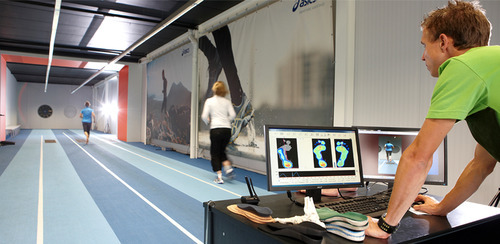The quick and drastic impact that 3D Printing is having on the design and performance of athletic shoes is significant and sizable. The world of fashion has implemented digital fabrication to break away from the conventional shoe designs, while athletic shoe designers have taken a more scientific approach.
Nike was an early adopter of additive techniques in shoe design and recently introduced the first 3D printed football cleats for American football players, the Vapor Laser Talon. The studs on the sole of the shoe allow athletes to run faster and decreases their acceleration time. On the field, those advantages can can mean the difference between making the play or getting tackled.
Belgian shoe retailer, Runners Service Lab, offer foot and stride scanning to manufacture custom shoes that aim to increase performance and prevent sports related injuries. With a 150,000 Euro subsidy from a Flemish innovation industry, the company has been able to develop a method for marrying 3D Scanning & 3D Printing technologies. Their pioneering approach to shoe design has the capacity to simplify, personalize and lower the cost of the manufacturing process.
Luc Fusaro, a student at the Royal College of Art in London, developed a shoe that weighs in at less than three and a half ounces. Entitled “Designed to Win” this lightweight sprinting shoe was created using a technique called Selective Laser Sintering (SLS). Fusaro took 3D scans of the athlete’s foot to customize the fit, then printed them out using a nylon polyamide powder which is one of the strongest materials available for use in 3D printers. This design can boost a runner’s performance by 3.5 percent, an amazing feat in a sprinter’s world. Although still in the development stages, Fusaro hopes to debut his design in the 2016 Olympics.
Anticipating how 3D Printing techniques will be used in the realm of athletic shoes in the future is both riveting and uncertain. In the future, 3D Printed shoes could be designed to perfectly suit individuals, using an athlete’s verbal feedback or DNA to tailor the footwear to their exact needs. We would love to see how multi-material prints could be used to make layered and lightweight single piece footwear. Scientific breakthroughs aside, 3D Printing technology could also drastically lower the price of footwear, radically change distribution techniques and enable athletes to perform to the absolute best of their ability.
source: 3D Print Tumblr



No comments:
Post a Comment